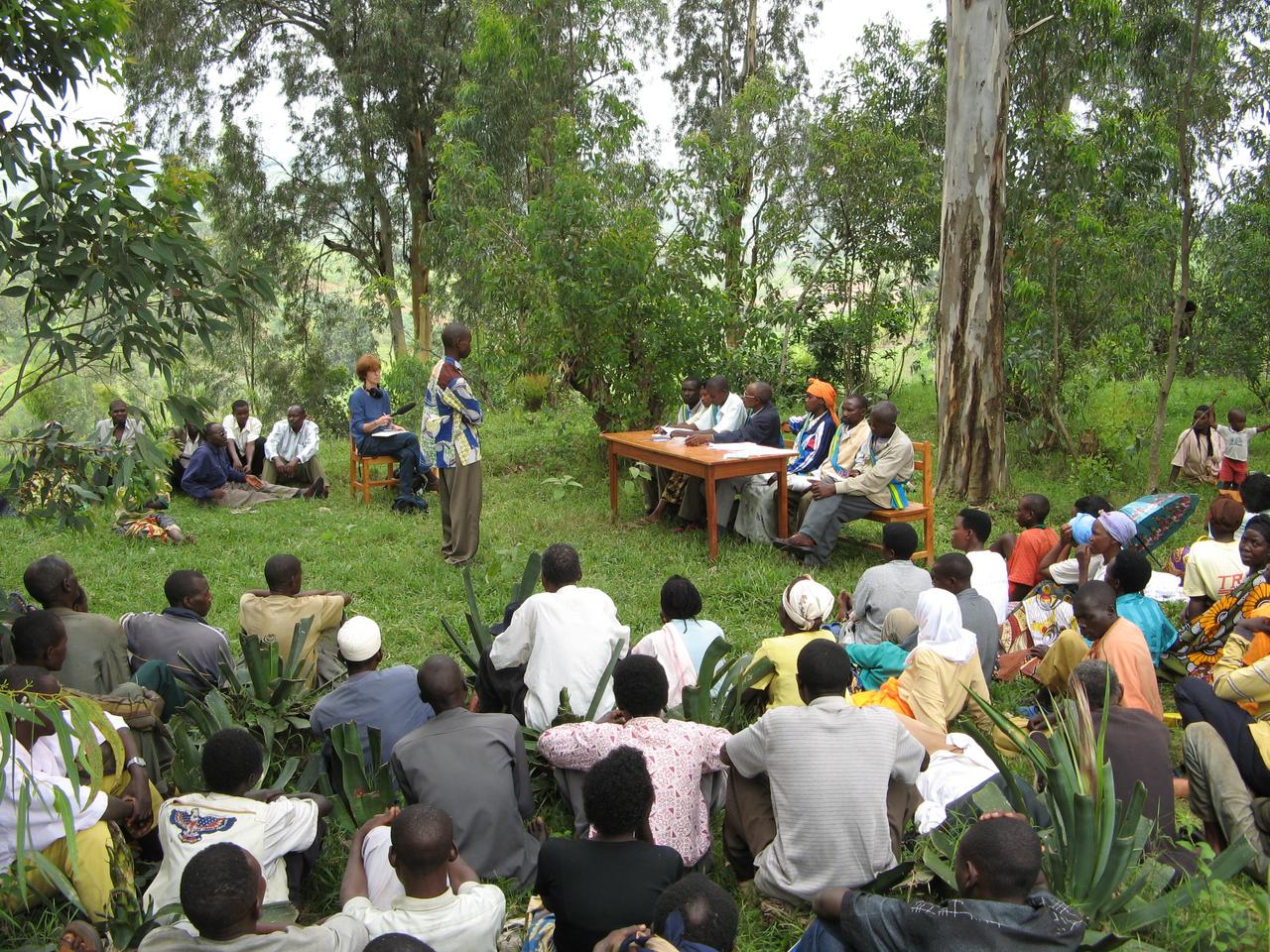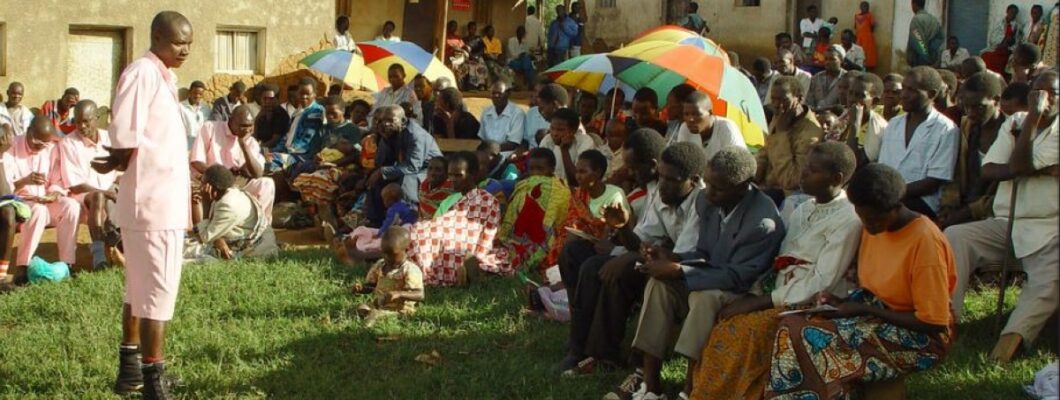Imagine living in a time when there were no judges, lawyers, or laws to settle your conflicts. How would you resolve your differences with your neighbors, friends, or enemies? For many ancient societies, the answer was simple: they would meet on a grass field, and talk it out.
“So we have lost a big number of people, but these people have been also killed by another big number. After that observation, our government has decided to look for an alternative solution. That’s why we have Gacaca now,” says Domitilla Mukantaganzwa to Theworld News, a government official in charge of the Gacaca courts. As ridiculous as it sounds, the Rwandan Genocide trial was prosecuted through the Gacaca Court.
Rwanda, warmly known as the “Heart of Africa” has witnessed one of the worst genocides in human history. In 1994, extremist Hutus killed about 8,00,000 Tutsis and moderate Hutus in a span of 100 days. The genocide left the country devastated, traumatized, and divided. How did Rwanda manage to recover from this tragedy and rebuild its society? Well, It’s Gacaca court!
Gacaca (p.n: ga.sa.ka) means “short grass” in Rwanda. Gacaca Court refers to the traditional system of community justice practice, where people gathered on a grassy field to resolve their disputes together.

The Gacaca trial system was introduced by the Rwandan government, led by RPF Leader Mr. Paul Kagame to deal with Rwanda genocide cases and promote reconciliation.
How does this court model work?
The Gacaca court trial model is truly innovative and works as follows:
- The judges of the Gacaca courts are called inyangamugayo, meaning “people of integrity“. They are elected by the local communities from among the ordinary citizens, who are not involved in the genocide, and who have a good reputation and moral character. They are trained by the national service of Gacaca courts, which supervises and coordinates the activities of the courts.
- The courts classify the genocide suspects into three categories, according to the gravity of their crimes. The first category includes the planners, organizers, and leaders of the genocide, as well as the perpetrators of rape and sexual violence. They are tried by the conventional courts, and face the maximum penalty of life imprisonment. The second category includes the killers, and those who inflicted serious bodily harm. They are tried by the Gacaca courts, and face a prison sentence of 5 to 30 years, which can be reduced by half if they confess and ask for forgiveness. The third category includes the looters and those who committed minor offenses. They are also tried by the Gacaca courts and face a prison sentence of 3 to 12 years, which can be replaced by community service if they confess and ask for forgiveness.
- The courts conduct the hearings in public, usually once a week, in the presence of the local population. The hearings follow a four-phase process: information gathering, judgment, execution, and follow-up. In the information gathering phase, the judges collect the testimonies and evidence from the witnesses, victims, and accused, and compile a list of the crimes and the suspects. In the judgment phase, the judges deliberate and decide on the guilt or innocence of the suspects, and determine the appropriate sentences and reparations. In the execution phase, the judges ensure that the sentences and reparations are carried out and that the offenders are reintegrated into society. In the follow-up phase, the judges monitor and evaluate the impact and the outcome of the Gacaca process, and report any problems or issues to the national service of Gacaca courts.
The main reasons for introducing Gacaca courts in Rwanda were:
- To speed up the trials of the genocide suspects, who were too many to be handled by the formal justice system. There were about 120,000 suspects in prison, and only 50 judges and 250 lawyers in the country. At the rate of the conventional courts, it would have taken more than 100 years to process all the cases.
- To encourage the truth-telling, confession, and repentance of the perpetrators, who could receive reduced sentences or community service in exchange. The government hoped that by revealing the truth and acknowledging the guilt, the perpetrators would help the survivors to heal and to find closure.
- To facilitate the healing, forgiveness, and reconciliation of the survivors and the offenders, as well as their families and communities. The government believed that by bringing the parties face to face, and allowing them to express their feelings and opinions, they would be able to overcome their hatred and resentment and restore their relationships.
- To restore the social harmony and cohesion of the Rwandan society, which was shattered by the genocide. The government aimed to rebuild the trust and confidence among the people and to foster a sense of national unity and identity, beyond the ethnic divisions.
Why Gacaca court model is innovative and why is it different from other legal practices?
- It is based on the local culture and tradition of Rwanda, rather than on the Western or international norms and standards. It respects and incorporates the values and customs of the Rwandan people, such as participation, dialogue, and reconciliation.
- It is a participatory and inclusive process, involving millions of Rwandans as judges, witnesses, victims, or accused. It empowers the people to take part in the administration of justice and to have a voice and a stake in the outcome.
- It is a flexible and adaptive process, evolving over time to address the challenges and criticisms it faced. It adjusts its rules and procedures according to the feedback and suggestions of the participants and the observers.
- It is a holistic and comprehensive process, covering not only the legal aspects, but also the social, psychological, and moral aspects of the genocide. It deals with the root causes and the consequences of the genocide and offers a range of remedies and interventions, such as reparations, apologies, forgiveness, and reconciliation.
Why Gacaca court model was successful?
- It accelerated the trials of the genocide suspects and reduced the backlog and the congestion of the prisons. It processed more than 1.2 million cases, and released more than 65,000 prisoners, between 2002 and 2012.
- It encouraged the truth-telling, confession, and repentance of the perpetrators, and provided the survivors with information and answers. It recorded more than 800,000 confessions and revealed the names and locations of more than 300,000 victims.
- It facilitated the healing, forgiveness, and reconciliation of the survivors and the offenders, as well as their families and communities. It created a space for dialogue and interaction and fostered a culture of mutual understanding and respect. It also promoted the restoration of social bonds and trust among the people.
- It restored the social harmony and cohesion of the Rwandan society and contributed to the stability and development of the country. It helped to create a sense of national unity and identity and to prevent the recurrence of violence and conflict. It also supported the economic and social recovery of the country, by providing employment, education, health, and infrastructure.
Is it possible to use the Gacaca court model on modern social disputes?
The Gacaca court model is a context-specific and culture-sensitive model that may not be easily replicated or transferred elsewhere. However, it is possible to use some of the principles and elements of the Gacaca court model on modern social disputes, such as:
- The use of community-based and restorative justice approaches, that involve the participation and the empowerment of the people, and that focus on the repair and the reconciliation of the harm, rather than on the punishment and the retribution of the offender.
- The use of dialogue and mediation techniques enables the parties to communicate and understand each other and to find mutually acceptable and beneficial solutions.
- The use of traditional and customary practices, that respect and incorporate the
For admission purposes please check the Admission section!


The breadth of knowledge compiled on this website is astounding. Every article is a well-crafted masterpiece brimming with insights. I’m grateful to have discovered such a rich educational resource. You’ve gained a lifelong fan!
Hello! This is my first visit to your blog! We are a collection of volunteers and starting a new project in a community in the same
niche. Your blog provided us beneficial information to work on.
You have done a marvellous job!
I love reading through an article that will make people think.
Also, thanks for allowing me to comment!
Hi there, just became alert to your blog through Google, and found that it’s truly informative.
I am going to watch out for brussels. I’ll appreciate if you continue
this in future. Numerous people will be benefited from your writing.
Cheers!
Hey I know this is off topic but I was wondering if you
knew of any widgets I could add to my blog that automatically tweet my newest twitter updates.
I’ve been looking for a plug-in like this for quite some time and was
hoping maybe you would have some experience with something like this.
Please let me know if you run into anything. I truly enjoy reading
your blog and I look forward to your new updates.
Yes! Finally something about pocket option tournament.
I’m not sure exactly why but this blog is loading very slow for me.
Is anyone else having this problem or is it a problem on my end?
I’ll check back later on and see if the problem still exists.
Hi there! I know this is kinda off topic but I was wondering if you knew where I could get a captcha plugin for my comment form?
I’m using the same blog platform as yours and I’m having
trouble finding one? Thanks a lot!
I was curious if you ever thought of changing the page layout of your site?
Its very well written; I love what youve got to say.
But maybe you could a little more in the way of content so people could connect with it
better. Youve got an awful lot of text for only having
1 or 2 pictures. Maybe you could space it out better?
Having read this I thought it was rather informative.
I appreciate you taking the time and energy to put
this article together. I once again find myself spending way too much
time both reading and leaving comments. But so what, it was still worth it!
Pretty! This has been an extremely wonderful article.
Thank you for providing this information.
It’s a shame you don’t have a donate button! I’d without a doubt donate
to this fantastic blog! I guess for now i’ll settle for book-marking and adding your RSS feed to my Google account.
I look forward to brand new updates and will
talk about this site with my Facebook group. Talk soon!
Useful info. Lucky me I discovered your web site by chance, and I’m shocked why
this twist of fate didn’t took place in advance! I
bookmarked it.
This is a really good tip especially to those fresh to the blogosphere.
Simple but very accurate info… Appreciate your sharing
this one. A must read article!
Hmm it seems like your blog ate my first comment (it was super long) so I guess I’ll just sum it up what I wrote and say,
I’m thoroughly enjoying your blog. I too am an aspiring
blog blogger but I’m still new to the whole thing.
Do you have any tips and hints for inexperienced blog writers?
I’d definitely appreciate it.
Hi! I could have sworn I’ve been to this site before but after reading
through some of the post I realized it’s new to me.
Anyhow, I’m definitely glad I found it and I’ll be
book-marking and checking back often!